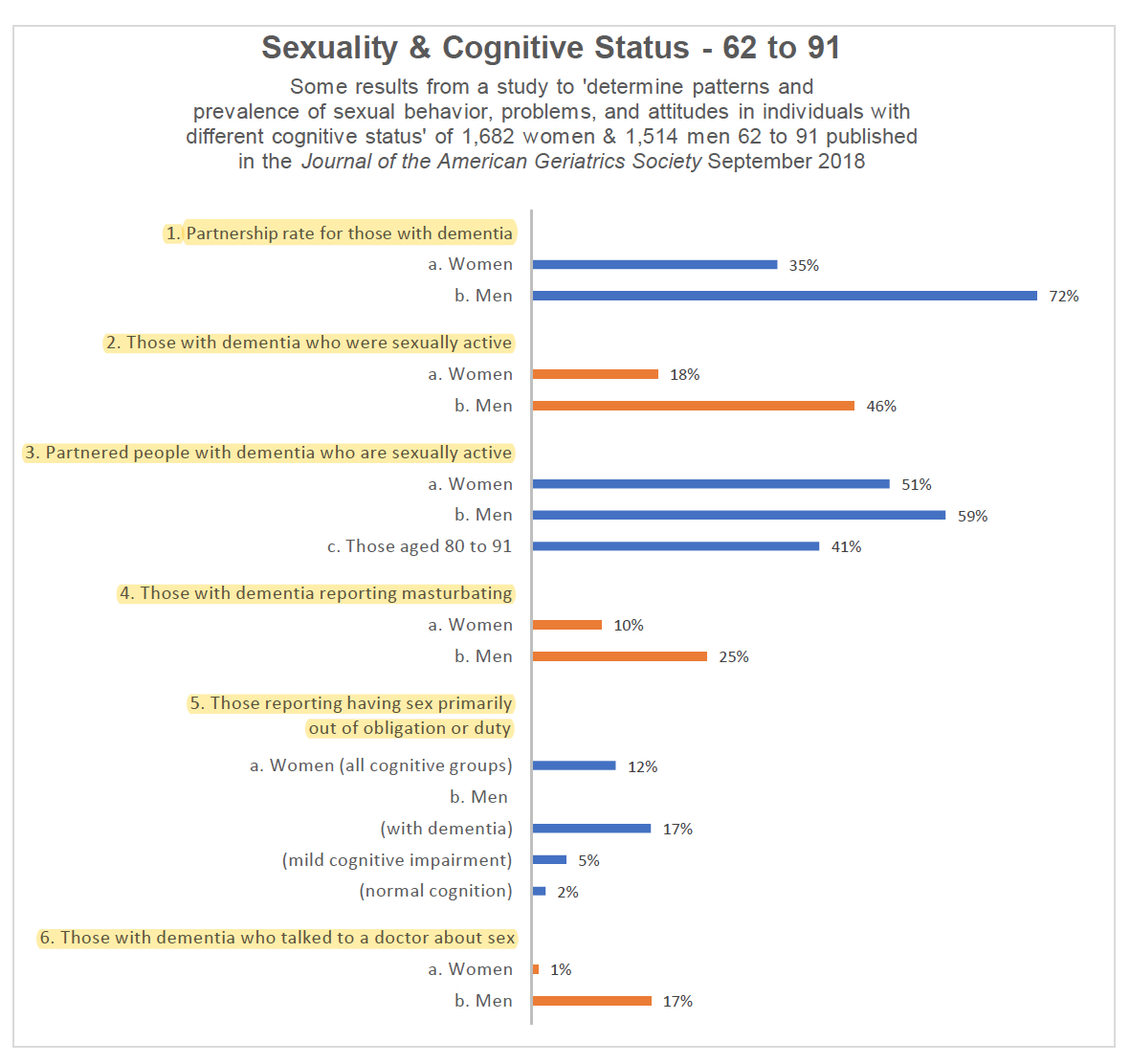Some results from a study to ‘determine patterns and prevalence of sexual behavior, problems, and attitudes in individuals with different cognitive status’ of 1,682 women & 1,514 men 62 to 91 published in the Journal of the American Geriatrics Society September 2018
(For more information, see the Topics Masturbation, Senior Sex)

Some Stats from “Sexuality and Cognitive Status: A U.S. Nationally Representative Study of Home‐Dwelling Older Adults,” agsjournals.onlinelibrary.wiley.com, September 12, 2018. Journal of the American Geriatrics Society – Volume 66, Issue 10.
“Previously described,1, 17 NSHAP is a nationally representative, population‐based, longitudinal study of health and aging using a U.S. household sample of home‐dwelling adults born between 1920 and 1947. People who identify as Black or Hispanic, men, and individuals aged 75 to 84 at the time of screening were oversampled. NSHAP Wave 2 (W2, 2010–11) included spouses and cohabiting partners of Wave 1 (W1, 2005–06) respondents.18 This secondary analysis was conducted at the University of Chicago under an institutional review board–exempt protocol. All respondents provided written documentation of informed consent and received monetary incentive for their participation.19
W2 data collection consisted of a home computer‐assisted personal interview (CAPI) (English or Spanish) and a leave‐behind questionnaire (LBQ) that respondents were to complete and mail back. The conditional response rate was 89%. Mean item‐level missingness was 1% for most CAPI domains and 5% for the LBQ.18
We used data from 3,196 NSHAP W2 survey respondents aged 62 to 91 (1,514 men, 1,682 women). Some analyses were restricted to a subsample of partnered men (n=1,283) and women (n=1,023)….
Overall, 83% of men and 57% of women were partnered; two couples interviewed were in same‐sex relationships. The likelihood of partnership was lower with lower cognition and for women than men (Figure 1A). The overall partnership rate was higher for men with dementia (72%) than women without cognitive impairment (63%) and nearly double that of women with dementia (35%).”
Chart created and posted by SexEd.net December 2020